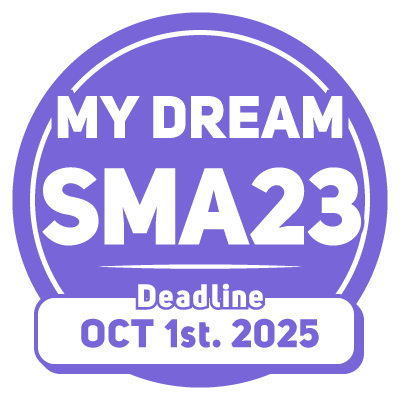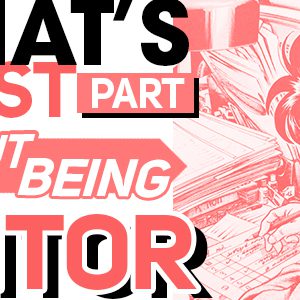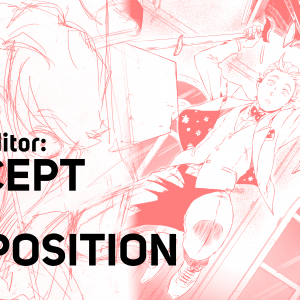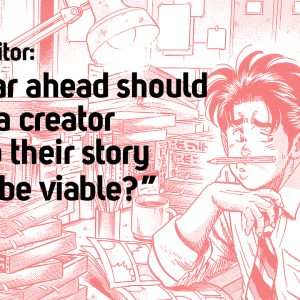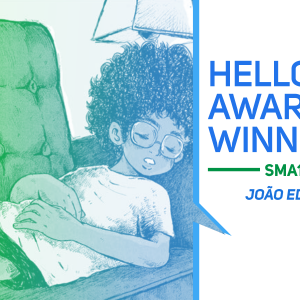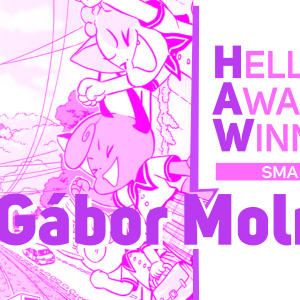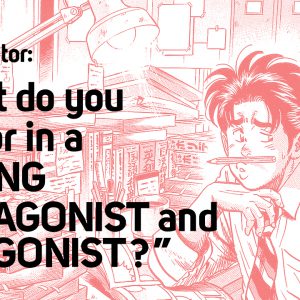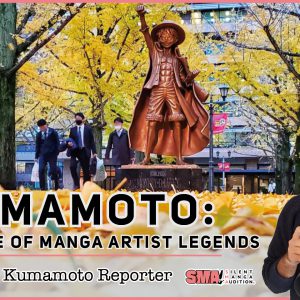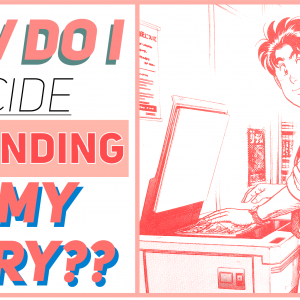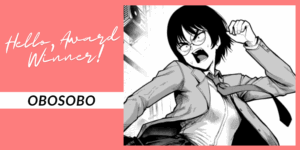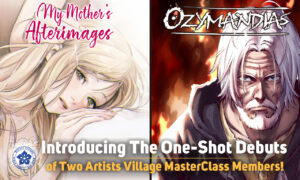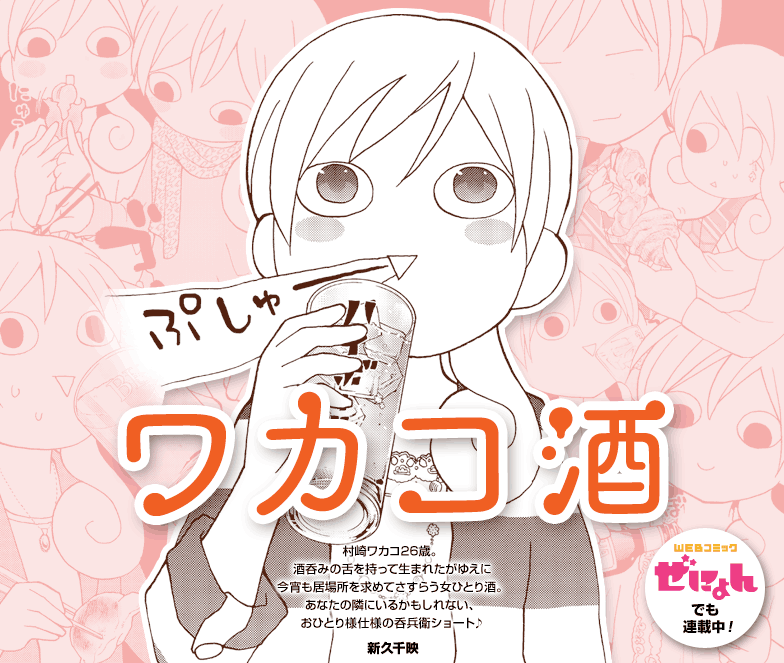
“…I honestly took on any and all manga assignments I could find”
We sent out the call for questions and you didn’t disappoint! We chose 5 of the best, from how to break into the industry to finding inspiration for her wildly popular manga series. So without further ado, we are pleased to bring you… Chie Shinkyu-sensei! QUESTION 1: Hi Shinkyu sensei! My goal is to break into the manga industry as an assistant or with an original manga of my own. What was the journey to manga success like for you? How did you go from being an amateur to a professional? Thank you!
I began my career by submitting work to publishers and magazines, either in person or through competitions. Eventually I started to win awards, but it took many years to make my debut. It was through approaching magazines that I met my editor, who then introduced me to a manga studio where I could build up my skills as an assistant while working on my own names. By closely working with my editor to improve my manga names, I finally made my debut. Unfortunately my first series was short lived, so I returned to working an assistant with several studios. At that time, I honestly took on any and all manga assignments I could find, regardless of publisher or content while continuing to work on my own concepts. It was during this time I started Wakakozake from a suggestion by my editor, which is where I am now.
QUESTION 1: Hi Shinkyu sensei! My goal is to break into the manga industry as an assistant or with an original manga of my own. What was the journey to manga success like for you? How did you go from being an amateur to a professional? Thank you!
I began my career by submitting work to publishers and magazines, either in person or through competitions. Eventually I started to win awards, but it took many years to make my debut. It was through approaching magazines that I met my editor, who then introduced me to a manga studio where I could build up my skills as an assistant while working on my own names. By closely working with my editor to improve my manga names, I finally made my debut. Unfortunately my first series was short lived, so I returned to working an assistant with several studios. At that time, I honestly took on any and all manga assignments I could find, regardless of publisher or content while continuing to work on my own concepts. It was during this time I started Wakakozake from a suggestion by my editor, which is where I am now.
 QUESTION 2: I’ve tried many techniques, but I’m losing motivation in making a winning a manga entry. What advice would you give to help me carry on?
I’ve always liked drawing deformed (or is it stylized?) versions of people. To achieve this I needed to build up basic skills in realism, so I practiced a lot (I used to draw people and poses from the photographs in the sports section of newspapers). I’ve played with a lot of styles and techniques, even submitting a manga with drama in the style of paintings! I know you’ve tried many different techniques also, so why don’t you try imitating the style, characters and backgrounds of your favorite manga artists? You’re sure to pick up your own individual style as you experiment further. Good luck!
QUESTION 2: I’ve tried many techniques, but I’m losing motivation in making a winning a manga entry. What advice would you give to help me carry on?
I’ve always liked drawing deformed (or is it stylized?) versions of people. To achieve this I needed to build up basic skills in realism, so I practiced a lot (I used to draw people and poses from the photographs in the sports section of newspapers). I’ve played with a lot of styles and techniques, even submitting a manga with drama in the style of paintings! I know you’ve tried many different techniques also, so why don’t you try imitating the style, characters and backgrounds of your favorite manga artists? You’re sure to pick up your own individual style as you experiment further. Good luck!
 QUESTION 3: What is the hardest part in planning and creating Wakakozake?
The overall story is same, and doesn’t change significantly as it progresses. But it won’t be exactly the same either. Actually, I’ve unknowingly used the same phrases and almost drawn a menu I’ve already used several times now (laughs)!
Gathering food stories is hard enough in itself, but it’s how I express them that is the most important aspect of the manga. Whenever I eat or drink out somewhere and feel something significant, I try to makes notes. Same when I’m trying a new drink at home, so its useful to always carry my notebook with me at all times!
QUESTION 3: What is the hardest part in planning and creating Wakakozake?
The overall story is same, and doesn’t change significantly as it progresses. But it won’t be exactly the same either. Actually, I’ve unknowingly used the same phrases and almost drawn a menu I’ve already used several times now (laughs)!
Gathering food stories is hard enough in itself, but it’s how I express them that is the most important aspect of the manga. Whenever I eat or drink out somewhere and feel something significant, I try to makes notes. Same when I’m trying a new drink at home, so its useful to always carry my notebook with me at all times!
 QUESTION 4: Hi Sensei! How are you? Wakakozake is very subtle in its story telling. How do you achieve this?
Nice to meet you! It’s difficult to identify what parts of Wakakozake are popular with the readers. The concept is very simple; Wakako is having a problem and she overcomes it by having a drink.
QUESTION 4: Hi Sensei! How are you? Wakakozake is very subtle in its story telling. How do you achieve this?
Nice to meet you! It’s difficult to identify what parts of Wakakozake are popular with the readers. The concept is very simple; Wakako is having a problem and she overcomes it by having a drink.
 I always begin the first four panels of a chapter with a scene the reader might have experienced themselves to hook them in. As the story largely takes place in Izakaya’s (a Japanese restaurant/bar), I add a lot of detail to the background and make the space as lively as possible. Coupled with keeping dialogue short and concise, my goal is to make my manga entertaining and easy to follow.
I always try to note down my feeling and thoughts when I’m having a drink, however small they might be and translate that into my manga. These thoughts and feelings are details the reader can identify with and relate to. I’m also always happy when I meet people who don’t drink alcohol, but still enjoy the manga.
I always begin the first four panels of a chapter with a scene the reader might have experienced themselves to hook them in. As the story largely takes place in Izakaya’s (a Japanese restaurant/bar), I add a lot of detail to the background and make the space as lively as possible. Coupled with keeping dialogue short and concise, my goal is to make my manga entertaining and easy to follow.
I always try to note down my feeling and thoughts when I’m having a drink, however small they might be and translate that into my manga. These thoughts and feelings are details the reader can identify with and relate to. I’m also always happy when I meet people who don’t drink alcohol, but still enjoy the manga. QUESTION 5: What are the 3 most important elements you include in all of your manga stories?
To make sure the manuscript doesn’t look embarrassing when evaluated later on, I don’t include easy or rushed drawings. I make a lot of effort with detailed backgrounds so the overall flow of the page still looks good when I return to evaluate it.
To ensure I have plenty of input and ideas, it’s important to regularly visit different Izakaya’s; read lots of books and manga and also make an effort in meeting people. All of this requires a lot of energy but it’s vital. Always try something new within your limitations to help generate ideas.
Finally, do not overload yourself with work and plan like crazy! When I’m physically tired or stressed I never give my best, so make sure you reserve time for you while always planning ahead with realistic lead times to ensure you meet your deadlines.
QUESTION 5: What are the 3 most important elements you include in all of your manga stories?
To make sure the manuscript doesn’t look embarrassing when evaluated later on, I don’t include easy or rushed drawings. I make a lot of effort with detailed backgrounds so the overall flow of the page still looks good when I return to evaluate it.
To ensure I have plenty of input and ideas, it’s important to regularly visit different Izakaya’s; read lots of books and manga and also make an effort in meeting people. All of this requires a lot of energy but it’s vital. Always try something new within your limitations to help generate ideas.
Finally, do not overload yourself with work and plan like crazy! When I’m physically tired or stressed I never give my best, so make sure you reserve time for you while always planning ahead with realistic lead times to ensure you meet your deadlines.

